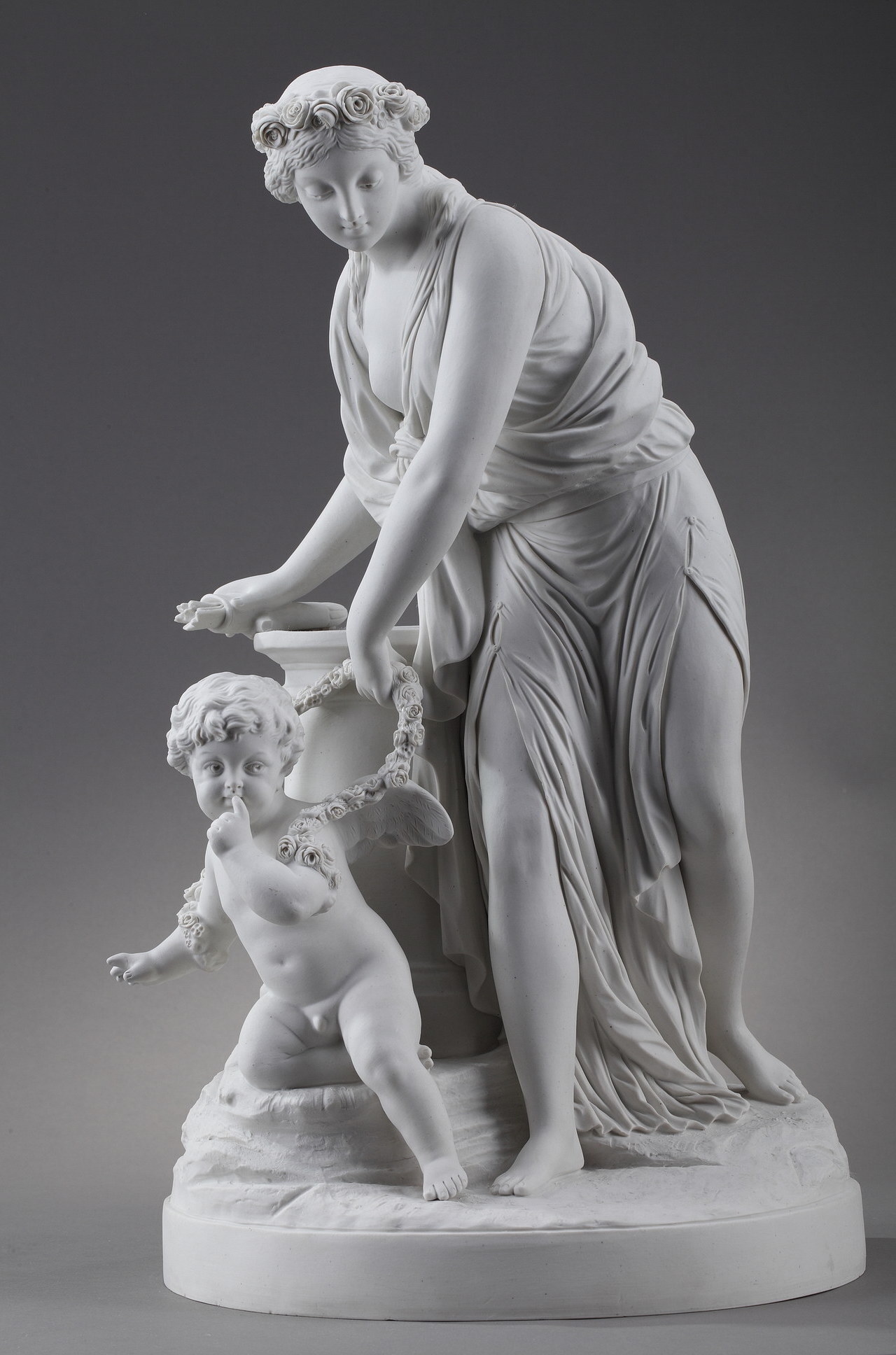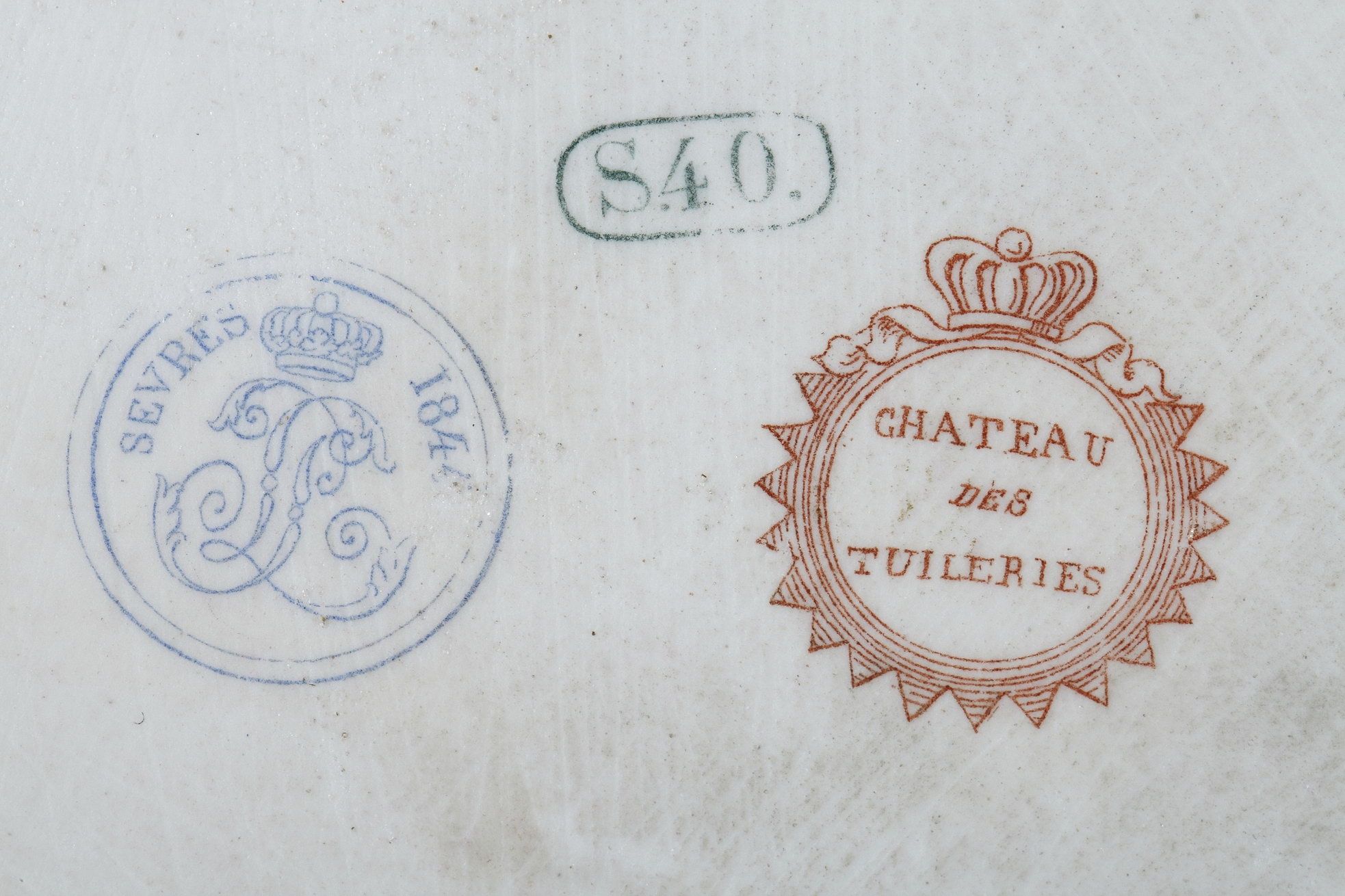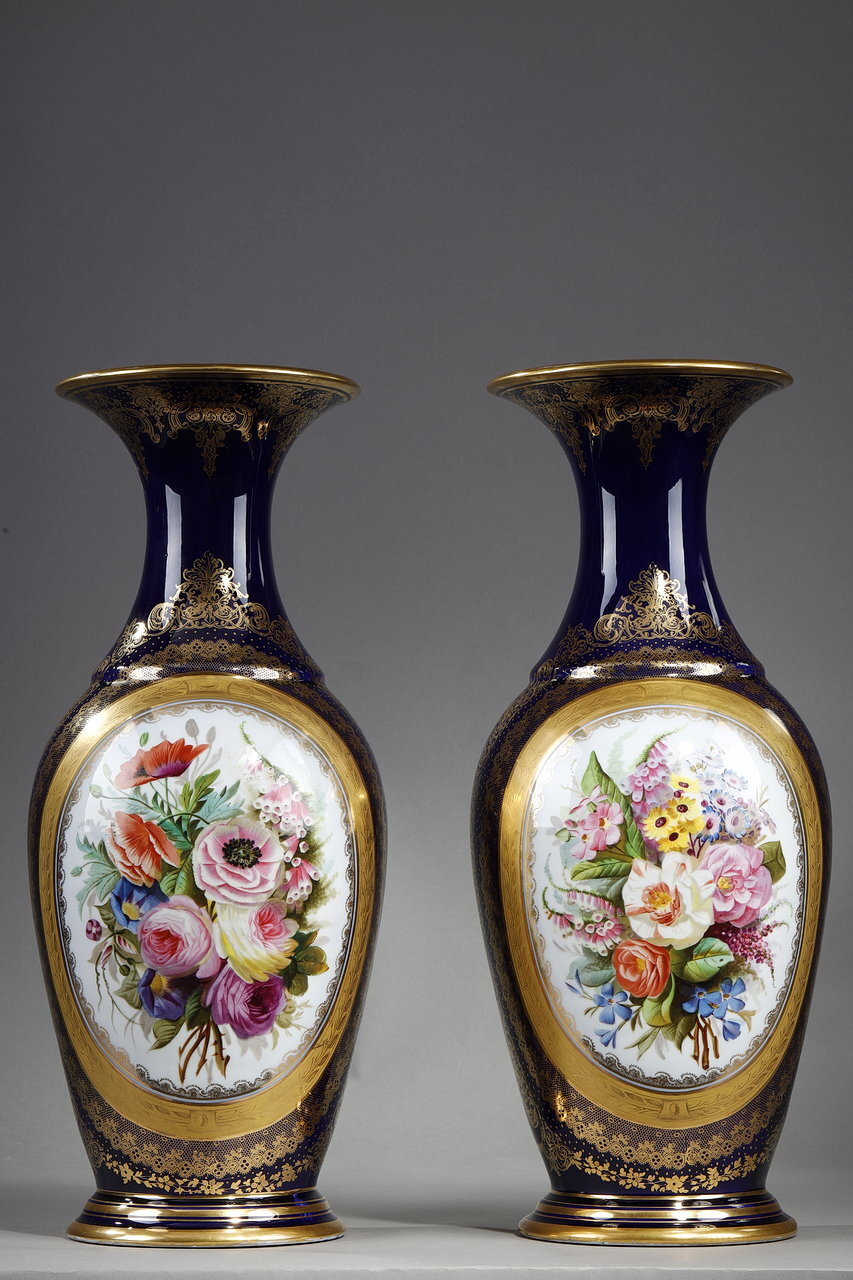The History of Porcelain Biscuit
08.12.21
Attention, sweet tooths! The biscuit we're about to talk about will make your teeth ache. Whether it's a bust, a peasant woman, a ball queen, or a centerpiece , these pristine white biscuits are perfect for decorating your home. Their production began in the 18th century in a factory that quickly distributed them throughout Europe. But what exactly is a biscuit ? What's its history? What is it made of, and how?
BISCUIT PRODUCTION: AN ECONOMIC STAKE
In the 18th century, aristocrats adored exotic objects: lacquerware, Indian cotton, and especially porcelain . The latter, which originated in China in the 7th and 8th centuries, fascinated people with its whiteness and translucency. Europeans imported it from the East to satisfy their curiosity. They also tried to discover the secret of its production as early as the 17th century, but without success. They lacked the essential ingredient for its manufacture: kaolin .
 Pair of horses from the Samson house imitating Saxon pieces
Pair of horses from the Samson house imitating Saxon pieces
, Germany. The manufacturing processes were developed in 1708, and the Meissen factory began producing the first porcelain in Europe. Collectors then turned to this new production center to satisfy their tastes, much to the dismay of Colbert, the Minister of Finance. He ruled the French economy with an iron fist, promoting French manufacturing in all sectors: textiles, furniture, mirrors, and so on. But spending on porcelain escaped his control and represented a flight of capital abroad.
The decision was then made to establish a factory in France to compete with Saxon porcelain . In 1745, the king granted a factory located in the Château de Vincennes the exclusive privilege of producing porcelain "in the Saxon style, painted and gilded with human figures." Unfortunately, this was not very successful at first. The factory primarily produced porcelain flowers to decorate artificial bouquets in vases still imported from the neighboring country.
Pair of porcelain vases with a "Valentine's Blue" base
Lacking the secret of porcelain , the Vincennes factory developed a technique using frit, a paste of glass and crystal that remained white and opaque. Initially, they imitated German forms, but the artisans noticed that the glaze, a transparent or colored coating applied to the pieces, detracted from the finesse of their work. Indeed, it accumulated in the folds and intricate details of French sculptures, diminishing their quality. In 1753, Jean-Jacques Bachelier commissioned figurines deliberately left unglazed and undecorated. Thus, biscuit porcelain .
Large Biscuit, “Bather with Swallows” by Joseph Peiffer
This marked the beginning of immense success. Louis XV, who had acquired the factory on the advice of Madame de Pompadour, moved it to Sèvres in 1756. It has retained the name Sèvres Manufactory to this day. The king placed large orders for his own decoration, as well as for diplomatic gifts. Sèvres porcelain could be found in all porcelain . A large number of orders then poured into the Sèvres Manufactory, sometimes bypassing Meissen production . France regained its dominance in the European market .

Biscuit "Love Disarmed by a Vestal Virgin" after Louis-Simon Boizot
The revolution in French porcelain began in 1770 with the discovery of kaolin in the country. This led to the development of hard-paste porcelain , the true porcelain . Louis XV purchased the land in Saint-Yrieux where the quarry exploiting this precious clay . However, it wasn't until 1774 that its use was implemented at Sèvres. Production became shorter and less expensive, but it required generating kilns four times more powerful. Initially, this technique was reserved for bisque porcelain, as glazes and enamels were not yet mastered. Small sculptures were thus produced with a more pronounced whiteness, a soft polish, and an almost crystalline sound. This technique also allowed for the production of larger pieces. This matte white imitates the grain of statuary marble and elevates bisque porcelain to the status of a true work of art, no longer merely decorative.
SÈVRES BISCUIT OR COPY?
But the Sèvres factory wasn't the only one producing biscuit . Given its great success, copies of porcelain . Even though it was forbidden, some rival manufacturers didn't hesitate to recruit artisans directly from the royal manufactory, offering them much higher wages. Indeed, by simply copying existing models, they didn't need to hire a renowned sculptor to create them.
Biscuit porcelain is all the easier to copy because it lacks a mark. Marks generally serve to determine whether a piece is authentic or not. The 18th-century Sèvres manufactory displays the royal cipher, two facing Ls, and a number indicating the date of creation, all under the glaze. However, when the decision is made to create pieces without glaze, a problem arises. What will prevent another manufactory from buying undecorated pieces bearing the Sèvres mark and adding a "re-decoration" to pass them off as originals? The decision is therefore made not to mark the biscuits.
 Marks of the Sèvres porcelain factory under a 19th-century tea service
Marks of the Sèvres porcelain factory under a 19th-century tea service
Nor can one rely on the term "Sèvres" affixed to one of these statuettes. It is not a guarantee of origin, since several manufacturers established themselves in the city to benefit from the renown of the royal manufactory. To distinguish a Sèvres porcelain biscuit, one must therefore examine the quality of the workmanship, the quality of the material, and the detailed rendering of the sculpture—qualities that only experts are capable of recognizing.
Finally, France was not the only country to produce biscuit porcelain . All the European courts were trying to establish factories capable of creating these precious ornaments. The Meissen itself began producing unglazed pieces to compete with Sèvres, its main rival.
WHY THE NAME "BISCUIT?
Originally, to produce this type of piece, the soft clay, lacking kaolin, was fired twice, hence the term "bis-cuit" (double-fired). With the discovery of kaolin in France, unglazed figurines only needed a single firing, but the production of figurines that remained white retained this name.
Today, the definition of porcelain biscuit is: figure or group in porcelain , unglazed.
CONCLUSION
Biscuits are still produced today in numerous European factories, but Sèvres remains the benchmark for this craft. Each year, contemporary artists are invited to explore and innovate within this technique. Despite its long history, biscuit making thus remains a technique firmly rooted in the contemporary world .
Want to know how the porcelain pieces in our collections are made? Read this article . Looking to add a biscuit to your home? Discover all our biscuits.



